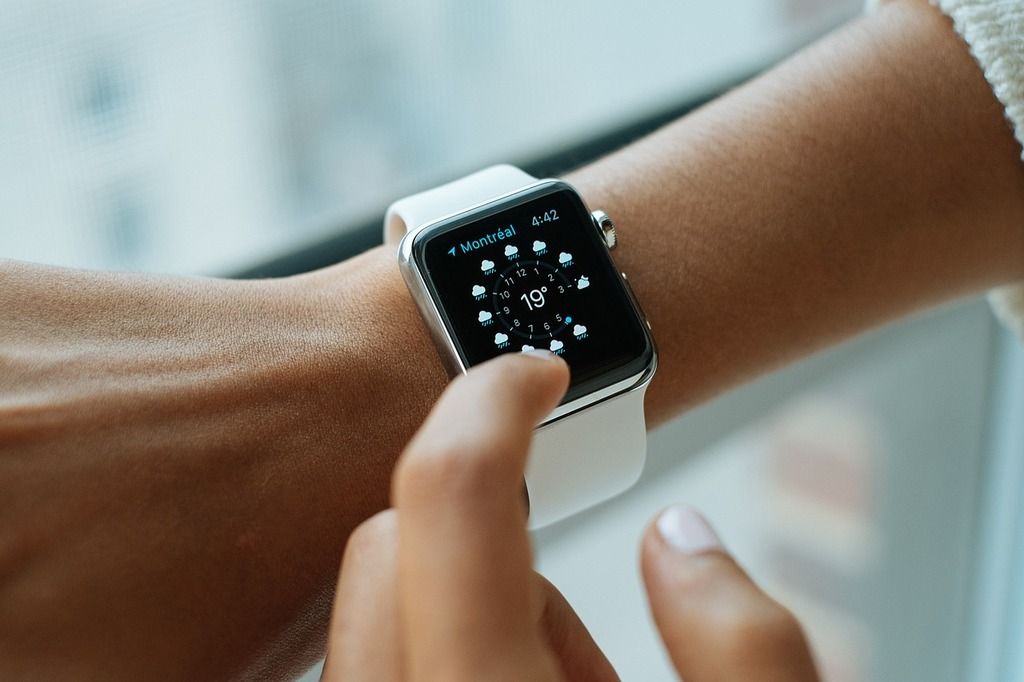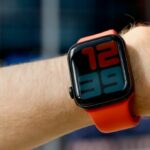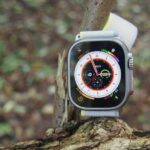The Apple Watch has become a popular wearable device in recent years, offering a range of features and functionalities. In this article, we will explore the pros and cons of the Apple Watch, as well as compare it to other smartwatches. Here are the key takeaways:
Key Takeaways
- Convenient access to notifications
- Health and fitness tracking
- Seamless integration with other Apple devices
- Limited battery life
- Reliance on iPhone connection
What is the Apple Watch?

The history of the Apple Watch
The Apple Watch is a convergent device that offers convenient access to timekeeping. With a simple turn of the wrist, you can view the time and date without having to reach into your pocket or bag. The Watch’s faces range from minimal to infographic to utilitarian, and each face includes a number of complications that offer even more data. Additionally, the Apple Watch has water resistance and includes features like tracking swims and providing detailed maps of routes. It also has an electrocardiograph (ECG) feature that reads your heart’s electrical signals. Overall, the Apple Watch combines style and functionality to provide a comprehensive timekeeping experience.
Key features of the Apple Watch
The Apple Watch offers several key features that make it a popular choice among consumers. One of the standout features is its convenient access to notifications. With the Apple Watch, you can quickly glance at your wrist to see incoming messages, emails, and other alerts without having to take out your phone. This can be especially useful in situations where reaching into your pocket or bag is not convenient.
Another important feature of the Apple Watch is its health and fitness tracking capabilities. The latest models come with a GPS and an upgraded built-in heart-rate monitor, allowing you to track your workouts, steps, and even swimming activities. The Apple Watch also includes a dedicated Workout app that provides detailed tracking and maps of your routes.
In addition, the Apple Watch seamlessly integrates with other Apple devices, such as iPhones and AirPods. This integration allows for a seamless user experience, with features like call forwarding, music control, and Siri voice commands accessible directly from your wrist.
Overall, the Apple Watch offers a combination of convenience, health tracking, and integration with other Apple devices that make it a compelling choice for many consumers.
Pros of the Apple Watch

Convenient access to notifications
The Apple Watch offers quick and convenient access to notifications right on your wrist. When a notification comes in, you receive a subtle tap that doesn’t even light up the display unless you turn the Watch to signal your interest. You then get a short summary of the information, providing the app name along with a brief bit of context. This allows you to quickly decide if you want to stop what you’re doing and view more. Additionally, the Apple Watch has a Notification Center, similar to the one on the iPhone, where you can swipe down and glance at all incoming notifications. This feature eliminates the need to reach into your pocket or bag to check your phone. With the Apple Watch, you can stay connected and informed with just a glance at your wrist.
Health and fitness tracking
The Apple Watch is a powerful tool for health and fitness enthusiasts. With a GPS and an upgraded built-in heart-rate monitor on the latest Series 7 models, the Apple Watch makes for a compelling exercise and wellness companion. It automatically tracks all the basics, including standing, moving around, exercise, steps, and stairs climbed. The Workout app is specifically designed to track walks, runs, rides, rolls, and more. The Apple Watch also offers improved water resistance, allowing you to track swims and get detailed maps of your routes on land and sea. Additionally, starting from the Apple Watch Series 4, it includes an ECG feature for monitoring heart health.
Seamless integration with other Apple devices
The Apple Watch offers seamless integration with other Apple devices, allowing for a truly connected experience. With Siri and HomeKit integration, you can control various devices in your home, such as lights, thermometer, blinds, and fans, right from your wrist. Additionally, the Apple Watch can act as a tracker for your iPhone, making it convenient if you ever misplace your phone nearby. It also has basic phone and messaging features built-in, allowing you to reply to messages and receive calls instantly. The GPS Cellular model even lets you stay connected and use features like GPS and messaging without your iPhone nearby. Overall, the Apple Watch’s seamless integration with other Apple devices enhances convenience and functionality.
Cons of the Apple Watch

Limited battery life
One of the drawbacks of the Apple Watch is its limited battery life. While the exact battery life can vary depending on usage, on average, the Apple Watch needs to be charged daily. This means that you will need to remember to charge it overnight or during the day to ensure that it doesn’t run out of battery. However, Apple has made efforts to improve the battery life with each new generation of the Apple Watch.
To mitigate the issue of limited battery life, you can take advantage of power-saving features such as turning off unnecessary notifications, reducing the brightness of the display, and using the Power Reserve mode when the battery is critically low. Additionally, carrying a portable charger or having access to charging stations throughout the day can also help ensure that your Apple Watch stays powered up.
While the limited battery life may be a downside for some users, it’s important to consider the overall functionality and features that the Apple Watch offers. With its convenient access to notifications, health and fitness tracking capabilities, and seamless integration with other Apple devices, the Apple Watch continues to be a popular choice among tech enthusiasts and fitness enthusiasts alike.
Reliance on iPhone connection
One of the main drawbacks of the Apple Watch is its reliance on an iPhone connection. The Apple Watch is designed to work seamlessly with an iPhone, and many of its features require an iPhone to function properly. For example, to receive notifications, make calls, or access certain apps, the Apple Watch needs to be connected to an iPhone via Bluetooth. This means that if you don’t have an iPhone or if your iPhone is not nearby, the functionality of the Apple Watch is significantly limited.
Additionally, the Apple Watch relies on the iPhone for internet connectivity. Without an iPhone connection, the Apple Watch cannot access the internet or use certain online features. This can be a disadvantage for users who want to use the Apple Watch independently, without having to carry their iPhone with them at all times.
However, it’s worth noting that Apple has introduced cellular models of the Apple Watch, which have built-in cellular connectivity. These models allow the Apple Watch to connect to the internet and make calls even when the iPhone is not nearby. This provides more flexibility and independence for users who want to use the Apple Watch without relying on an iPhone connection.
Expensive price point
One of the main drawbacks of the Apple Watch is its expensive price point. Compared to other smartwatches on the market, the Apple Watch tends to be on the higher end of the price spectrum. This can make it less accessible to some consumers who are looking for a more budget-friendly option. However, it’s important to note that the Apple Watch offers a range of advanced features and functionalities that justify its higher price. From convenient access to notifications to seamless integration with other Apple devices, the Apple Watch provides a comprehensive smartwatch experience.
Apple Watch vs. Other Smartwatches

Comparison of features
When comparing the features of the Apple Watch with other smartwatches, there are several key points to consider. First, the Apple Watch offers a wide range of watch faces, from minimal to infographic to utilitarian to motion graphics. Each face includes a number of complications, which provide additional data and functionality. These complications can include world clocks, alarms, a stopwatch, weather updates, activity levels, and more. Additionally, the Apple Watch allows for complications from third-party apps, giving users even more customization options.
In terms of health and fitness tracking, the Apple Watch excels. It offers a comprehensive suite of features, including heart rate monitoring, activity tracking, sleep tracking, and workout tracking. The watch also has built-in GPS, allowing for accurate distance and location tracking during outdoor activities. With its integration with the Health app on iPhone, users can easily view and analyze their health data in one place.
When it comes to compatibility with different smartphones, the Apple Watch is designed specifically for use with iPhones. While this may be a limitation for Android users, it ensures seamless integration and a smooth user experience for iPhone users. The watch can display notifications, messages, and calls from the iPhone, and users can also control music playback, use Siri, and access apps directly from the watch.
Overall, the Apple Watch stands out in terms of its watch face customization, health and fitness tracking capabilities, and seamless integration with iPhones. While it may have limitations in terms of compatibility with other smartphones, its features and functionality make it a top choice for Apple users.
Design and aesthetics
The Apple Watch is known for its sleek and stylish design, making it a fashionable accessory for any occasion. With a variety of watch faces to choose from, ranging from minimalistic to infographic to utilitarian, users can customize their watch to suit their personal style. Additionally, the Apple Watch offers a range of complications, which are additional features and data that can be added to the watch face. These complications can include world clocks, alarms, weather updates, activity levels, and more, providing users with quick access to important information at a glance.
In terms of aesthetics, the Apple Watch offers a range of materials and bands to choose from, allowing users to further personalize their device. The watch is available in aluminum, stainless steel, titanium, and ceramic, each offering its own unique look and feel. The bands come in various styles, including sport bands, leather bands, and stainless steel bands, catering to different preferences and occasions.
Overall, the design and aesthetics of the Apple Watch combine functionality with fashion, making it a standout choice for those who value both style and technology.
Compatibility with different smartphones
The Apple Watch is designed to seamlessly integrate with iPhones, offering a comprehensive smartwatch experience for Apple users. However, it is important to note that the Apple Watch is only compatible with iPhones and does not support other smartphone platforms such as Android. This exclusivity ensures that the Apple Watch can take full advantage of the features and functionalities of the iOS ecosystem. From receiving notifications to making calls and sending messages, the Apple Watch provides a convenient extension of your iPhone right on your wrist. Whether you have a bigger iPhone that you typically leave on a table or in a bag, or you simply prefer the convenience of having quick access to your iPhone’s features without taking it out of your pocket, the Apple Watch offers a seamless and intuitive user experience.
Conclusion
In conclusion, the Apple Watch offers numerous advantages that make it a valuable device to have. From its convenient timekeeping features to its health and fitness tracking capabilities, the Apple Watch provides users with a range of benefits. Additionally, its integration with other Apple devices and its ability to control connected devices in the home add to its versatility. While there are some limitations and considerations to keep in mind, the overall advantages of the Apple Watch make it a worthwhile investment for those looking for a smartwatch that combines style and functionality.
Frequently Asked Questions
What is the battery life of the Apple Watch?
The battery life of the Apple Watch varies depending on usage, but on average, it can last up to 18 hours.
Can I use the Apple Watch without an iPhone?
No, the Apple Watch requires an iPhone for initial setup and most of its functionality.
Is the Apple Watch waterproof?
The Apple Watch is water-resistant, but not fully waterproof. It can withstand water splashes and brief immersion, but it is not recommended for swimming or diving.
Can I make phone calls with the Apple Watch?
Yes, the Apple Watch allows you to make and receive phone calls when connected to your iPhone.
Can I listen to music on the Apple Watch?
Yes, you can sync music to your Apple Watch and listen to it using Bluetooth headphones.
Can I use third-party apps on the Apple Watch?
Yes, the Apple Watch supports a wide range of third-party apps that can be downloaded from the App Store.




